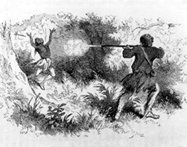Patterned Feathers, Piercing Eyes
Art, Japan, Japanese Art

November 10, 2007–April 13, 2008
Arthur M. Sackler Gallery, Smithsonian Institution
Currently underway at Washington’s Smithsonian-affiliated Sackler Gallery is an exhibition of the Etsuko and Joe Price Collection of Edo Period Japanese Painting. On previous display in Japan at four locations, the Price collection attracted more than 800,000 visitors becoming the most successful museum exhibition in Japanese history.
Paul Richard‘s review, in the Washington Post, makes an interesting comparison:
For the beauty-loving samurai of 18th-century Japan, those competitive aestheticians, true mastery of ink and edge were arts of the same height.
Slicing through a torso with a curving steel blade and putting ink to silk with a liquid-loaded brush, both of these were stroke arts. Both required the same swiftness, the same lack of indecision. For the master of the brush and the master of the blade, who were sometimes the same person, the flawless stroke expressed a Japanese ideal — the beauty-governed union of sure, unhurried speed and centuries-old tradition, utter self-assurance and Zen purity of mind.
Roughly 150 different paintings will be displayed 50 at a time. During the unusual five-month span of the exhibition, several complete rotations are scheduled to accommodate the scale of the collection and to protect the light-sensitive works from excessive continuous exposure.
Smithsonian Press Release
The Shin’enKan Foundation offers a CD of the collection.









